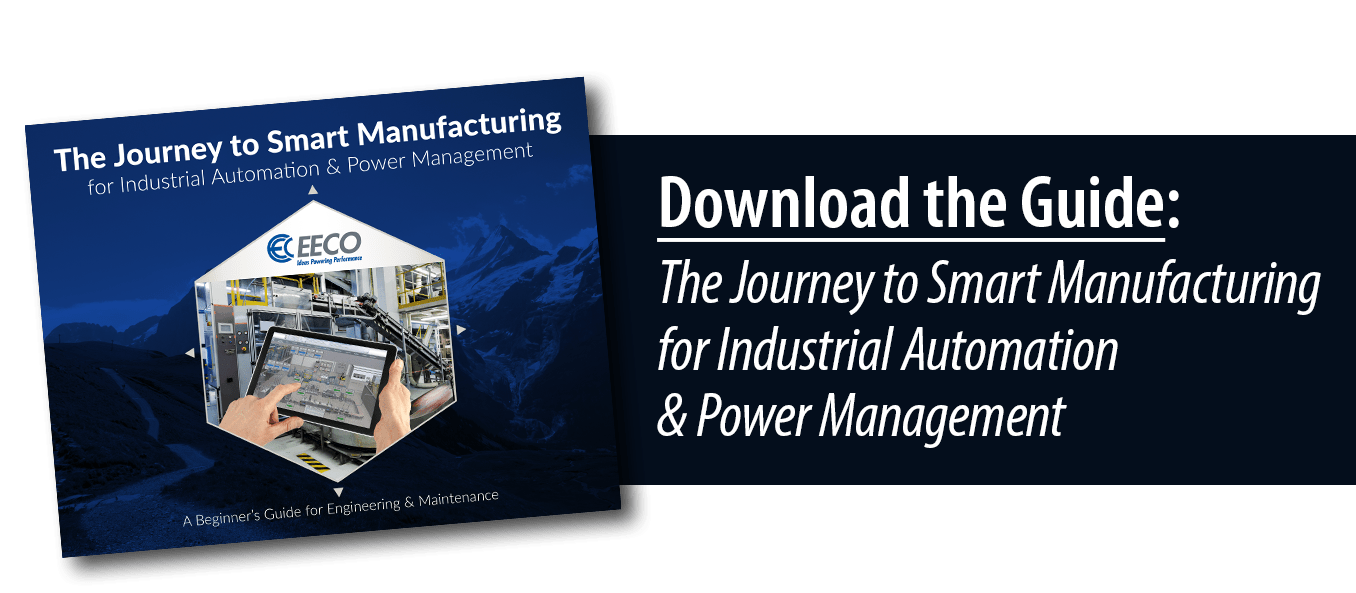Beginner's Guide for Engineering and Maintenance
U.S. manufacturers are lagging when it comes to smart manufacturing (SM). According to a 2014 Manufacturing Outlook Survey by the American Society for Quality, only 13 percent of U.S. companies are implementing SM. However, it’s important to note that of those organizations that say they’ve adopted SM:
- 82 percent claim they have experienced increased efficiency
- 49 percent experienced fewer product defects
- 45 percent experienced increased customer satisfaction
Why You Should Care About Smart Manufacturing
This wave of technology will create opportunities for engineers and technicians to test, experiment, and innovate like never before. Additionally, the ease of connectivity and integration of smart devices makes your job of support, maintenance, and troubleshooting much easier.
Your first step begins with planning for smart devices. There are three major developments driving more rapid adoption of smart devices today:
- EtherNet/IP Standardization. Point and click configuration makes it much easier to install, support, and integrate.
- Data Collection Applications. You can take control of your plant floor data and easily publish up to others, such as MES.
- Mobile Integrations. It has become easier than ever to port plant floor data directly to your phone.
But it takes time to implement, so don’t wait too long to get started. This book was written to help inform and inspire you to get going. It's broken down into five parts.
eBook Structure
Part One
We begin this guide with an overview of SM, or Industrie 4.0, depending on what side of the globe you’re trotting. We agree that it sounds a bit futuristic, and something to toss aside and think about later. However, there is something very important to consider here: Much of America’s electrical infrastructure is somewhere between end of life and total obsolescence. Think about it. Think about the oldest panelboards, transformers, Motor Control Centers (MCCs), drives, HMI, and other devices in your facility. We have a great opportunity to leap forward as we modernize, but there is one significant hurdle: Do you have a plan in place to upgrade that obsolete equipment? If you do, does that plan include means to incorporate smart technologies?
The need to modernize and the emergence of SM have governments, universities and the manufacturing industry clamoring to prepare. There are test beds currently in place all over the U.S. today, and major manufacturers are even sponsoring their own initiatives. Part one will introduce some of the organizations behind the movement as a whole.
Part Two
Part two explores connectivity, which is the ultimate enabler. Networks are at the heart of smart systems, and industrially hardened Ethernet networks are taking off. Part two will review why Ethernet is becoming so pervasive, the most popular protocols, and standards to consider when defining your own network specification.
Part Three
Part three introduces the concept of progression, the basic steps to get started. What is a smart device, and how do you start specifying you own smart devices as you define a plan? We will explore basic methods to experiment with smart devices and plan for information while making functional improvements to systems.
Part Four
Part four is our recommended, functional guide to getting started. We advocate an Installed Base Evaluation (IBE) as a means of setting a good foundation. Once you have assessed everything you have, you can easily identify risk areas and prioritize opportunities based on your goals. It’s a straightforward process of assessing technology, setting standards and identifying partners after the IBE.
Part Five
Part five is about building your network. This section explores what you need to know about an industrial Ethernet installed for performance. A reliable EtherNet/IP installation requires some basic understanding and planning, especially true for control applications. In this section we discuss three primary considerations when planning a new network.










